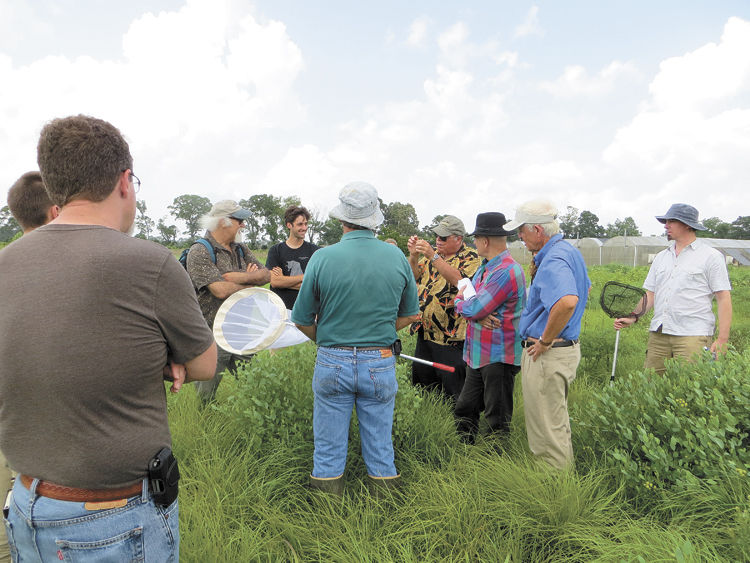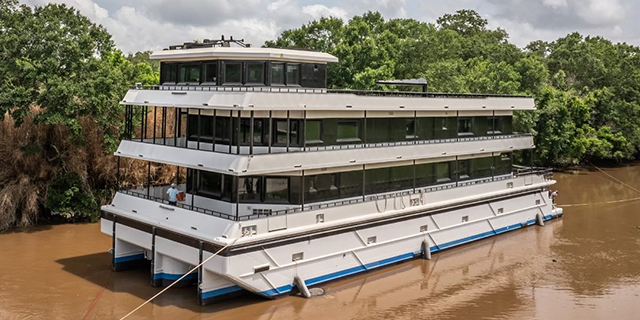Acadiana Master Naturalist
Published 10:22 am Tuesday, August 11, 2015

- Acadiana Master Naturalist
By Anne Minivielle • Submitted Photos
Most people think of Louisiana in terms of its native zydeco, gumbo and Mardi Gras mambo. But there is much more that is native to the state and specifically Acadiana that many people may overlook. The flora and fauna of the state is a dream for a naturalist. The state’s wetlands, bayous and lakes teem with life in unique forms. There is land to hike, woods to hunt and waters to fish. There are places to canoe and kayak and earth to host crops and crawfish. Birdwatchers delight in the bald eagles that come to the Cajun Coast for the winter, and what aficionado, or even rookie, of ornithologist could resist the rookeries where heron, egrets and even roseate spoonbills nest. This is Louisiana, a sportsman’s paradise to be sure, but also home to plant and animal life to be found, appreciated and preserved.
br
br
Masters Of Their Craft
br
Among those most dedicated to this mission in practically every state in the country are individuals who have earned the title “Master Naturalist.” Almost every state in the nation has a program to educate and encourage the work of master naturalists. According to the national web site, “Master Naturalists are trained to be stewards of our national environment and to teach these skills to others.” In Acadiana, some have heard of a Master Gardener Program, and the master naturalist training and sharing of knowledge is quite similar.
br
Before enthusiasts of Louisiana plant and animal life rush into pursuit of a title, it is wise to consider that the process of obtaining the title of “master,” is not an easy one. Those enrolled in the process spend many hours of classroom training as well as field instruction. Upon graduation, each master is expected to complete hours of volunteer work and to obtain more hours of continued education.
br
While all of this might sound exciting to an outdoor enthusiast, there are undoubtedly those who are wondering just what a naturalist is. The 400-year-old definition of a naturalist is simply, “student of plants and animals.” The definition was later expanded to include the term “expert, such as a biologist or zoologist.”
br
One individual, Ivan Phillipson, is a naturalist and co-owner of Volcano Nature Land Tours, and he says he feels the definition includes more. “A definition of naturalist needs to include something about appreciating or delighting in nature,” he reasons. “ A naturalist is a person who studies and is passionate about nature.” In Phillipson’s experience, anyone can be a naturalist. All it takes is the time and care to study the wonders of nature. He has never been just a biologist by virtue of a job, but a way of life. Louisiana has no shortage of such devotees and many have found themselves training for the Master Naturalist Chapters of Louisiana. The land and animals of Acadiana are a part of life, study and conservation.
br
br
Sportsman’s Paradise
br
Louisiana has four Master Naturalist Chapters, including Acadiana, Greater Baton Rouge, Greater New Orleans and the Northwest Chapter, which includes the Shreveport and Bossier area. The sponsoring agency for the Louisiana Master Naturalist Program (LMNP) is the LSU AgCenter. The center says that the LMNP is “an opportunity for citizens to expand or sharpen their skills in natural history, with special focus on the diverse habitats of the Sportsman’s Paradise.”
br
An interesting fact about the state program is that the logo is the Anhinga, an aquatic bird often seen throughout the state and especially the swamp environments. The logo shows the bird in a characteristic pose. The birds don’t have well-oiled feathers, so they climb out of the water and spread their wings to allow them to dry, and that position is pictured.
br
br
Natural Inspiration
br
Any native or visitor to Acadiana can enjoy the plethora of animals, plants and flowers that mark the beauty of the land of bayous and fields of wildlife, as well as protected refuges. One of the area’s passionate naturalists is Stacey L. Scarce, Curator of Natural Science at the Acadiana Park Nature Station in Lafayette, and coordinator of Acadiana’s Master Naturalist Program (AMNP).
br
Scarce recalls that she was inspired to start the AMNP by Bob Thomas of New Orleans who decided to start the Greater New Orleans Master Naturalist Program. She explains, “He had a meeting, which I attended, and when he suggested the need for programs in other areas, I exclaimed, ‘I am in, 100 percent!’” She emailed colleagues asking for volunteers to be on a steering committee, and that is how this devotee of all things pertaining to nature began her efforts to establish the AMNP.
br
In 2014, Scarce was named Conservation Professional of the Year by the Louisiana Wildlife Federation and was cited by the organization for creating the AMNP, the second such program in the state. Scarce serves as the group’s president and was responsible for creating their first curriculum of study, which includes 10 workshops that focus on aspects such as coastal restoration and native plants and animals.
br
The AMNP has specific goals, according to Scarce. “The objectives, or goals of the Association shall be to provide scientific, research-based education to the general public for a better understanding of local natural ecosystems and to promote conservation and preservation of native plant and animal life within Acadiana,” according to the bylaws of AMNP.
br
br
Course Work
br
Scarce explains that those with an interest in the mission of the organization, should know that membership requires a period of preparation in which applicants are involved in a program that requires 8 out of 10 offered programs to be completed. Scarce says, “Our program consists of a series of workshops for the purpose of educating applicants in matters of Acadiana ecosystems, environmental needs and natural history.”
br
The study concludes with a test for accreditation as Acadiana Master Naturalists.
br
In order to maintain an Active Status in AMNP, members must submit an Activity Report reflecting the completion of at least 20 hours of volunteer service in a naturalist-related activity, a requirement that is easy to complete for these naturalists who enjoy sharing their love of nature with others. Members are also required to complete hours of continuing education, which might include in-person or online classes as well as private research.
br
In the past, classes have included study at the Nature Station in Lafayette, the Rockefeller Wildlife Refuge, the Louisiana State Arboretum and Lakes Martin and Henderson. Each workshop consists of about six hours of study and hands on learning.
br
Judith Zoble has spent the hours studying and earned her certification as a Master Naturalist. She says, “I have been a long time outdoors enthusiast. I love to hike, bike, canoe and just be outdoors. I have a special interest in birds, and I have known Stacey Scarce for years. When she began the Master Naturalist program for the Acadiana region, I could not resist the opportunity.”
br
As most in the program find, Zoble says the experience was exciting. “The teachers and their obvious love for what they do and their desire to impart what they know to others was the most powerful part of the program,” Zoble says. She adds that she would encourage anyone who loves nature and learning about it to apply for the 2016 class.
br
br
Acadiana Park Nature Station
br
The Acadiana Park Nature Station is the perfect place for naturalists to hone their skills and delight in the gifts of nature. According to Scarce, over 150 species of birds have been recorded in the park. She says, “The much sought-after Swainson’s Warbler can be found in a few locations in the park. Although its loud, beautiful song can be plainly heard from April through mid-summer, catching a glimpse of the bird can be much more difficult.”
br
The Nature Station has much to offer the naturalist who is enthralled by mammals. Scarce says that the majority of those in the park are nocturnal. On the last Saturday of every month, the station sponsors a night hike, directed by a staff member, and participants have seen raccoons, flying squirrels and skunks.
br
In South Louisiana, nature includes snakes, and Scarce says that there are more than a dozen non-venomous species in the woods. She emphasized, “All snakes are, of course, protected here. Hikers in the park might also see five species of lizards and painted and common snapping turtles.
br
The nature trail, which promises much to explore and enjoy, is open every day of the year, from dawn to dusk. Perhaps one hike on the trail may be the impetus for further studies of nature, and those studies might result in one day becoming a certified Master Naturalist. In reality, Acadiana is much more than gumbo!
br





